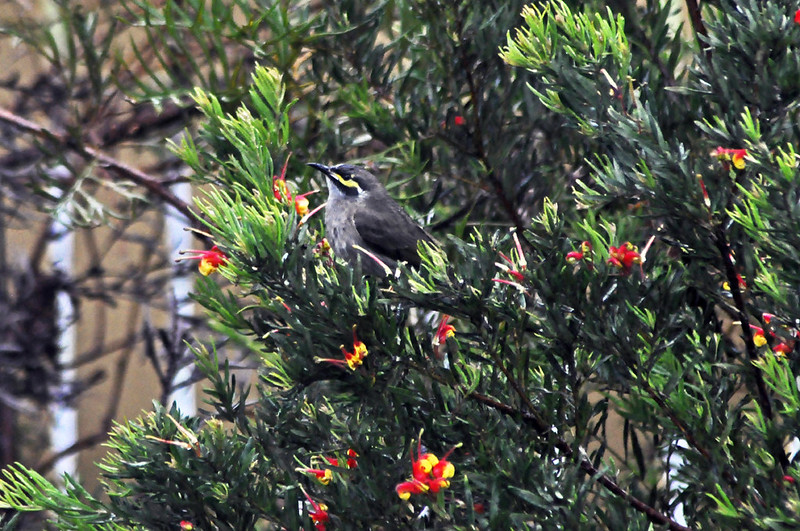Noticed a 'new' bird in our garden today. Haven't seen one of these here before. We were having lunch with family while it was lightly raining outside and I noticed movement in the grevilleas out in the garden. The colour and shape looked different to the usual Eastern Spinebill so I went and grabbed my camera to get a shot. Light was low so I couldn't get a high shutter speed for a sharp shot. But at least you can see what it is. Hoping I'll see it again sometime soon.











Very nice photo Kathie, I get them here in my garden (you saw the one I posted), they are a bit shy and flighty. Right at the moment I have flocks of up to 10. The ones at my place are a lot lighter grey though. I do hope you will get more of them, although the New Hollands might chase them away.
M-L
I hope we see more of them too. The New Holland Honeyeaters hang around on the property next door but we don't get them here very much. I do hear them in the bushes on the fence line from time to time. I'll be watching. Hoping for some sunshine and brighter light so I can get a higher shutterspeed and sharper shot.
Kathiemt
Selby, Victoria
Lovely pic. Wish I could have grown more grevilleas here as they attract so many birds.
Karen
Brisbane southside.
We have a lot of grevilleas here. Not all look healthy and not sure why, need to find out. But all the extra rain we've had might be responsible. The rest look great though. and yes, we get a lot of birds as a result.
Kathiemt
Selby, Victoria
Hi Kathie, if you go and have a good look what is indigenous to our area, you will know what your birds will eat. But most of all, you will know what will grow in your neck of the woods. And grevilleas do not belong into the area aroung the Dandenongs. It is far too damp here, they come from more dry areas like up north. They also don't last for very long either, about 15 years or so. We will be much better off planting things indigenous to your area. Although I have quite a few of them, like you, some did grow well, others didn't, some never made it.
M-L
Thanks Mary-Louise. They were all planted here before we shifted in. We notice that the small flower grevilleas seem to fair a lot better than the heavier flowered grevilleas. And the wattle birds love them, as do other honeyeaters. I did borrow a book from a friend about the vegetation in this area and we're slowly adding to what we have here already to increase the growth on our property. Keen to do some planting amongst the gumtrees in our bushland too, much like at a garden near Cloudehill but we have to find things our sheep won't eat as they keep the grass down there to a minimum too, about a half acre.
Kathiemt
Selby, Victoria
Yellow-faced honeyeaters can form quite large flocks when they're making seasonal movements. I recall seeing a flock I estimated at over 200 near Lorne, Victoria some years ago. They were passing overhead on their way to wherever they were on their way to.
Good clear shot of the face markings and I love that grevillea.
Beautiful Kath, love that Grevillia to :)
Beautiful Kath, love that Grevillia to :)
Beautiful Kath, love that Grevillia to :)